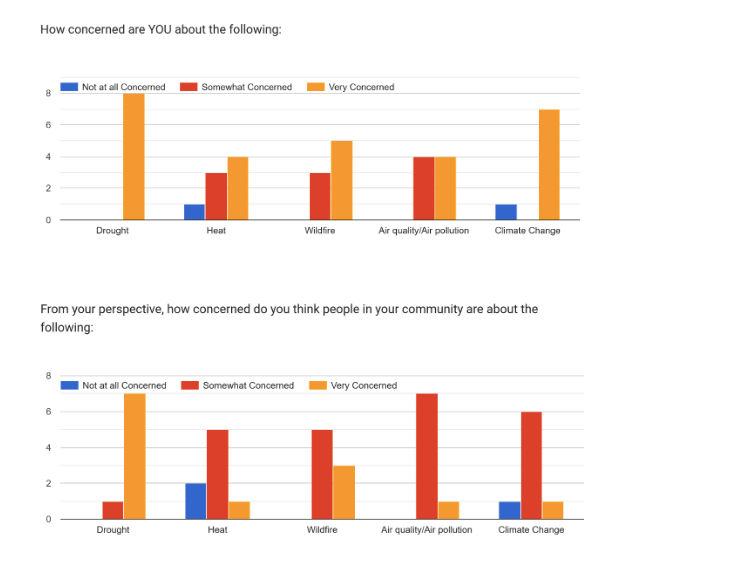Residents and Community Advisory Board Push for Climate Resiliency Planning in the San Luis Valley
- Isabel Lisle
- Jul 1, 2023
- 3 min read
Article by: SLVEC Communications Manager (Isabel Lisle)
Date: June 30, 2023

On May 22, 2023, a team of San Luis Valley (SLV) community leaders and researchers from the Rocky Mountain Prevention Research Center (RMPRC) met at the very first SLV Resiliency Planning Meeting to discuss the impending environmental challenges facing the SLV and potential resiliency planning solutions.
The team hopes to create a resiliency engagement report that synthesizes information from community residents related to climate concerns, such as air quality, drought, wildfires, and priorities for action in the SLV, as well as future areas of action in research, practice, and policy agendas to pursue climate action.
The London School of Economics defines (climate change) resilience as “the capacity to prepare for, respond to, and recover from the impacts of hazardous climatic events while incurring minimal damage to societal wellbeing, the economy and the environment”(Mehryar, 2022). Building community climate resilience involves strategies including mitigation and adaptation. Mitigation solutions aim to reduce emissions that directly cause climate change, while adaptation solutions aim to manage the risks of climate change impacts (NASA, 2023).

The SLV community leaders at the May Community Advisory Board (CAB) meeting consisted of: Chris Canaly (San Luis Valley Ecosystem Council), Anna Lee Vargas (Conejos County), Svetlana Bresnitz (SLV Health Pediatrician), Paula Hendericks (Health Educator on Air Quality), Emily Brown (SLV Resident, Farmer, and PH expert), Julie Geiser (RMPRC), Wendy Murillow (School Nurses), Hannah Thrill (Rio Grande Watershed Conservation and Education Initiative), and Don Hanna (PALS Children's Program).
The San Luis Valley Community Advisory Board (CAB) partners with researchers Kathy James and Lisa Cicutto from the Rocky Mountain Prevention Research Center. The Board aims to identify community needs and concerns; provides input on research design and implementation; provides input on communication and dissemination activities; recommends project specific team members; and acts as a liaison with the partner community. Kathy and Lisa want to build relationships and engage with the SLV community to:
Understand how the SLV communities are experiencing climate stressors (drought, wildfires, air quality) across multiple systems and sectors.
Identify priorities, opportunities, and assets to advance climate justice.
Build capacity for innovation and effective research and action.
At the end of the year, the team’s goal is to develop an Engagement Report that synthesizes key findings on climate and air quality concerns and priorities for action in the SLV, as well as research, practice, and policy agendas to pursue climate action.
During the meeting, the group discussed their biggest environmental concerns. The highest number of CAB members stated they are very concerned about drought and climate change in the SLV, yet interestingly they perceive that people in their communities are most concerned about drought and wildfire.

Everyone in the group agreed that over the next 20 years, climate change will cause more: air pollution, droughts, wildfires, heat waves, loss of wildlife habitats, severe storms, food shortages, and water shortages in the San Luis Valley. As a result of climate change, 100% of group members believe that air pollution related health effects will become more common in the future; 75% of group members believe that mental health conditions will increase; and 75% of group members believe that loss of homes and tribal lands will increase in quantity.
Several members of the group mentioned that we need more information collected from a baseline inventory of ecological resources (land and water), and local trends beyond water supply (wildlife population, health, weather, most vulnerable habitats) to inform this resiliency planning project.
In terms of resilience efforts, CAB asserts that San Luis Valley is already: monitoring air quality at schools for recess, investing in fire prevention and more effective firefighting, planning for extreme weather events at the county level, investing in developing solar, resisting water exportation and responsibly using river water.
The group would like to see: better information collection and dissemination, environmental education in schools, local policy changes, providing proactive solutions for individuals (wildfire preparedness, food storage, protecting skin from sun), planning and preparation on a larger scale, smart housing development, fuel alternatives, hazard planning, and involving different stakeholder groups at multiple systems levels.
Community Advisory Board meetings will continue to happen throughout the summer and well into the fall. Stay tuned for more updates.
For more information contact:
- Chris Canaly info@slvec.org
- Kathy James KATHY.JAMES@cuanschutz.edu
- Lisa Cicutto LISA.CICUTTO@cuanschutz.edu







Comments